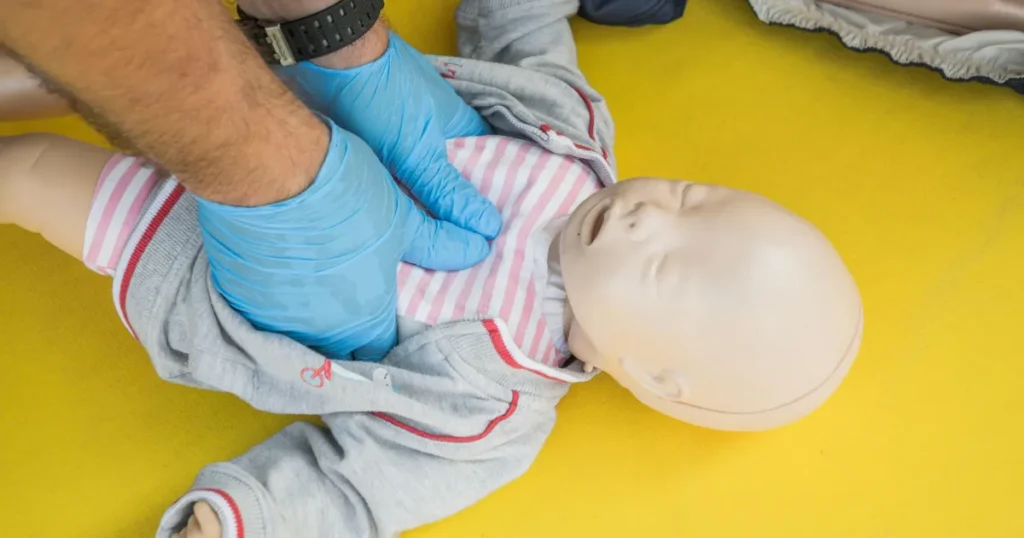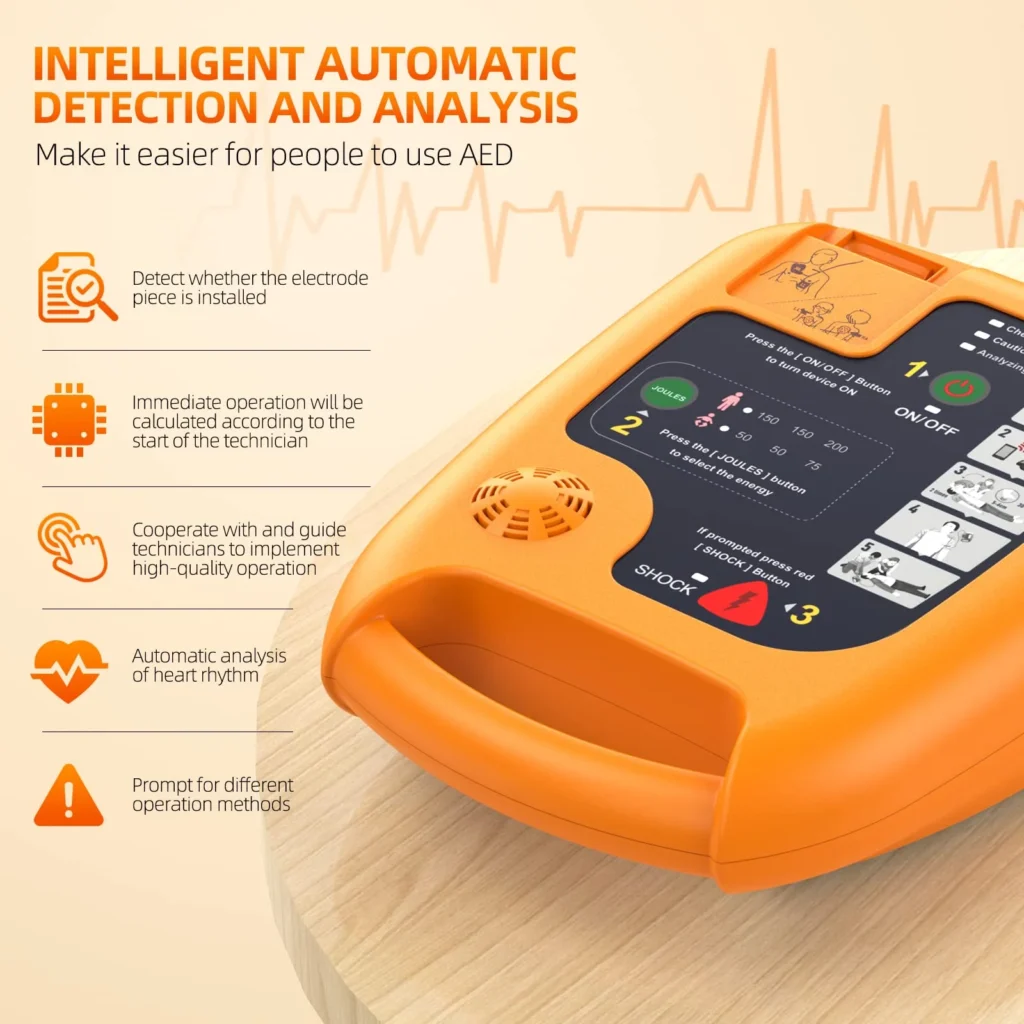As a new parent, it’s natural to worry about your baby’s safety. Learning CPR (cardiopulmonary resuscitation) can help save your child’s life in a cardiac emergency.
What is CPR?
CPR is an emergency procedure that combines chest compressions with rescue breaths to restore blood circulation and breathing.

What Causes Cardiac Arrest in Newborns?
- Congenital heart defects
- Respiratory distress
- Infections
- Asphyxia
- Other medical conditions
How to Prevent Cardiac Arrest in Newborns
- Regular prenatal care
- Follow medical advice
- Breastfeeding
When to Apply CPR
Perform CPR on an infant or child who is:

- Unresponsive in breathing
- Has no pulse or a weak pulse
How to Perform CPR
Infants (0-12 months)
- Check for responsiveness.
- Call for help
- Start CPR: 30 chest compressions + 2 rescue breaths
- Chest compressions: 1/4 inch deep, 100-120/minute
- Rescue breaths: 1 second, make chest rise. See video.
Using an AED (Automated External Defibrillator)
An AED is a portable device that analyzes the heart’s rhythm and delivers an electric shock to restore a normal heartbeat.

How to Use an AED
- Turn on the AED
- Attach electrode pads to the child’s chest
- Analyze the heart rhythm
- Deliver a shock
- Continue CPR

Important Tips
- Continue CPR until emergency services arrive or the child shows signs of regaining consciousness.
- Get trained: Take a CPR course.
Conclusion
CPR and AEDs can help save lives in cardiac emergencies. By understanding what CPR is, what causes cardiac arrest, and how to perform CPR and use an AED, you’ll be better equipped to respond in an emergency. Get an AED today. See our articles.








